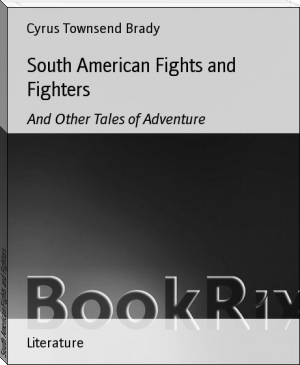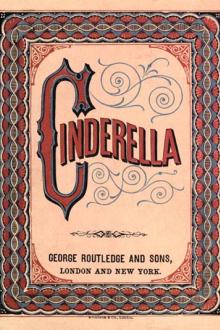South American Fights and Fighters, and Other Tales of Adventure by Brady (rosie project .txt) 📕

Read free book «South American Fights and Fighters, and Other Tales of Adventure by Brady (rosie project .txt) 📕» - read online or download for free at americanlibrarybooks.com
- Author: Brady
Read book online «South American Fights and Fighters, and Other Tales of Adventure by Brady (rosie project .txt) 📕». Author - Brady
IX. Paul Jones Never a Man of Wealth
Colonel Buell claims that John Paul Jones had riches and influence in Virginia after the death of his brother, but the claim is not tenable according to an exhaustive review of his book in the Virginia Historical Magazine. In the face of the present exhibit, and in the view of the fact that Jones himself spoke of living for two years in Virginia on fifty pounds, the story of his wealth cannot be credited. It is therefore entirely in harmony with the facts to accept the North Carolina tradition, in the absence of any evidence to the contrary. The direct statement coming to us in one instance through but one generation is entitled to respect. As a matter of fact both Colonel Buell's version of the matter and my own story rest upon tradition alone, with this difference—the evidence submitted absolutely excluded one of the accounts; the other, therefore, logically comes to the fore.
And thus, I think, I have contributed to clear up one mooted point in American history.
[1] My reason for including in this volume a paper on this great sailor whose career has already been discussed in "Revolutionary Fights and Fighters" (q. v.) is because this present article contains a new and original contribution to history, never before published in book form, which absolutely and finally settles one phase of the much mooted question as to why John Paul assumed the surname Jones, as will be seen hereafter.
[2] Of which he (General Taliaferro) had become the owner.
{301} V In the Caverns of the Pitt A Story of a Forgotten Fight with the Indians
One of the most distinguished of the minor soldiers of the Civil War, minor in the sense of being surpassed only by men of the stature of Grant, Sherman, Sheridan and Thomas, was George Crook. His exploits in the valley of the Shenandoah were brilliant, and his whole career was replete with instances of ability and courage which stamped him as a soldier of the first grade. A major-general of volunteers and a brevet major-general in the regular army, the year 1868 found him a colonel of infantry commanding the military district of Owyhee, a section of the country which included the southeastern part of Oregon and the northeastern part of California.
In the adaptation of means to ends, so far as Indian affairs are concerned, the United States has usually been woefully lacking. With a few companies of cavalry and infantry not aggregating a full regiment, this eminent soldier was directed to hold the various scattered garrison points throughout a large extent of territory, and also to settle the Indians, who for some time had been indulging their propensities for savage slaughter almost unchecked, save for a few sporadic and ineffective efforts by volunteers and irregulars.
The far western representatives of the great {302} Shoshone nation are among the meanest, most degraded, most despicable Indians on the continent. This did not hinder them from being among the most brutal and ferocious. They made the tenure of life and property more than precarious in that far-off section during and after the Civil War. They were not very numerous, nor were they a great race of fighters, except when cornered. The character of the country to the eastward of their ravaging ground, abounding in lava beds, desolate plains, inaccessible valleys and impassable mountain ranges, to which they could fly when they were hard pressed, rendered it difficult to bring any considerable number of them to action, and they enjoyed a certain immunity from punishment on that account.
The most important engagement between them and the troops, before the patience and perseverance of Crook and his handful, finally wore out the Indians, presents, perhaps, the one instance where they were brought fairly to bay and the soldiers had an opportunity to give them a thorough beating. This unique battle demonstrated also how desperately even a coward will fight when his back is against a wall. And it showed, as few other frontier fights have shown, the splendid courage of the regular American soldier in this arduous, unheeded service.
Early on the 26th of September, 1868, General Crook, with a small troop of cavalry, H of the First, numbering less than thirty men, together with about a score of mounted infantrymen from the Twenty-third Regiment, and perhaps as many Warm Spring Indian scouts under a leader named Donald Macintosh, with a small pack train, found himself on the south fork of Pitt River, in Modoc County, Cal., a few miles below its junction with the main stream. The {303} country is wild, unsettled, largely unexplored to this day. There is no railroad even now nearer than one hundred and twenty-five miles. General Crook had been hunting and trailing Indians in the Warmer Mountains without success for several days. On this morning the Warm Spring Indian scouts reported that a large body of Indians was encamped in the valley upon which he was just entering.
The general direction of the river here was due north and south. Perhaps a mile from the bank of the river to the west, rose a high tableland which terminated in precipitous and generally insurmountable bluffs of black basalt, extending above the general level of the valley about twelve hundred feet. Projecting eastward from the side of these lofty cliffs was a singular rocky plateau, the outer lines of which roughly formed a half circle. This elevation was bordered on the south by a deep and broken ca�on, on the north by a creek which ran through a forest of scattered juniper trees. The plateau rose in two gentle slopes to a height of about five or six hundred feet above the valley level, and was thus half as high as the bluff to the westward, which formed the base of the semi-circle. Near the northern part of the plateau the rocks were elevated in a series of irregular broken peaks, like the jagged ice hummocks of the higher latitudes. The whole plateau was covered with enormous boulders, over which it was impossible even to lead a horse. On the lower reaches plots of grass, dotted with junipers, abounded. The valley of the river proper below the cliffs and the projecting plateau was a good place for a camp, although the ground near the banks was swampy and impassable.
The peaks mentioned, it was afterward learned, {304} abounded with hidden caves and underground passages. By some curious freak of nature, the volcanic hummocks contained no less than four natural fortifications of varying sizes, which, supplemented by very slight efforts on the part of the Indians, had been turned into defensive works of the most formidable character.
They were connected by a perfect labyrinth of crevasses and underground passages and caves, so that the defenders could easily pass from one to the other. The northeast fort, which was the principal one of the chain, was surrounded by a natural gorge some fifty feet deep and twenty-five feet wide at the top. A sort of banquette, or balcony, making a practicable path several feet wide, extended around the fort between the wall and the edge of the ravine. The fort proper was enclosed by a wall of rock, partly natural, partly artificial, about eight feet high. An assailant crossing the ravine and gaining the crest of the peak would have ample standing ground between the edge and the wall. The broken ground around these forts on the plateau formed a series of natural rifle pits.
These works were held by no less than one hundred and twenty Shoshones belonging to the Piutes, Pitt Rivers, Modocs and Snakes. Their chief was Sa-hei-ta, one of the bravest and most brutal of the marauders. When they saw Crook's little force of fifty white soldiers and a score of Warm Spring Indians descending the bluff into the valley south of the rocky ca�on, they laughed them to scorn. They were confident in the strength of their position and in their numbers, and they resolved to hold their ground. Indeed, after the first few moments there was nothing else for them to do, for Crook distributed his cavalry {305} and infantry around the northern and southern sides, put his pack mules in camp in the valley on the east with a small guard, and threw the Warm Spring Indian scouts back of the forts between them and the cliffs. Thus he had the Indians surrounded, so far as seventy men could surround nearly twice their number in chosen fortifications. The whole place was popularly known as the Hell Caves of the Pitt River, although in the War Department and official records it is described more politely as the Infernal Caverns of the Pitt River.
Getting his men in position, Crook acted promptly. In long thin lines on the north and south, taking advantage of the abundant cover, the soldiers cautiously advanced, clearing out the rifle pits and driving the Indians back toward their stronghold. There was severe fighting all during the afternoon, in which First Sergeant Charles Brackett and Private James Lyons were killed and a number were wounded. The Warm Spring Indians, who were good scouts, did not fancy this sort of warfare, and they took practically no part in the battle. They were useful enough in one way, as they checked any retreat toward the bluffs, although as it turned out the Indians had no intention of leaving.
Finally, toward evening, the plateau was entirely cleared of Indians, who had all been forced back into the forts. Crook had sent a picket of soldiers to the edge of the basalt cliffs and these men, with long-range rifles, did some little execution on the defenders of the forts, although the distance was so great that their fire was largely ineffectual. Night found the soldiers ensconced behind boulders on the very rim of the ravine, the Indians in the forts. In little squads the {306} soldiers were withdrawn from the battlefield and sent down to the camp in the valley to get something to eat. They had been without food or water since morning, and fighting is about the hottest, thirstiest work that a man can engage in. After they had refreshed themselves, they went back to the plateau to keep watch over the fort. Desultory firing took place all night long, the Indians blazing away indiscriminately—they had plenty of ammunition, it appeared—and the soldiers firing at the flashes of the guns. The voices of the medicine men and the chiefs could be heard exhorting them and promising victory.
Crook determined to storm the place at break of day. The darkness rendered it impossible to attempt the broken, precipitous descent and ascent of the ravine in the night. Light was needed for that. He had fought valiantly throughout the day, this major-general, as a common soldier in the ranks. He was a dead shot, and had used his Spencer carbine with effect whenever opportunity presented. He could assemble for the assault but forty men, twenty-two of the First Cavalry and eighteen of the Twenty-third Infantry. The Warm Spring auxiliaries refused to assault, such close work not being to their taste. There were several wounded men in the camp, and a small guard had to be kept there to protect them and the horses from the attacks of some of the Indians who had taken advantage of the night to escape from the stronghold to endeavor to stampede the herd, and who from various covers kept up a constant fire on the camp, so that Lieutenant Eskridge, quartermaster, had his hands full in holding his ground.
First Lieutenant W. R. Parnell, now of San Francisco, who commanded the cavalry, was directed to {307} lead the assault. Second Lieutenant John Madigan, also of the cavalry, who had charge of the infantry, was ordered to support. The troops were directed to creep to the brink of the crevasses surrounding the fort and drop down it as quickly as possible. Arrived at the bottom, they were to scale the rocky counter-scarp, and when they got to the platform they were to keep moving while they attempted to break the wall of the fort proper. Crook, who believed in intimidation, advised them to yell and cheer as much as possible. The general crawled around during the night from man to man, acquainting every soldier with his ideas and "talking to them as a father." He reminds me a little of Henry V. before the battle of Agincourt.
The task he had set his soldiers was desperate in the extreme. It speaks well





Comments (0)